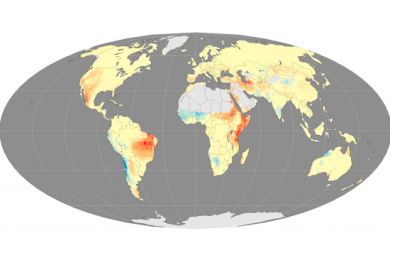A new joint study between the U.S. Forest Service, the National Oceanic and Atmospheric Administration (NOAA), and the European Centre for Medium-Range Weather Forecasts Interim Reanalysis (ERA-Interim) reveals that fire seasons have lengthened between 1979 and 2013. Moreover, the researchers also discovered that tough fire seasons have become more frequent during this period.
This analysis was carried out by using satellite data on maximum temperatures, minimum relative humidity, the number of rain-free days, and maximum wind speeds. All are meteorological variables that have an effect on the length of fire seasons, especially if high temperatures, low humidity, rainless days, and high winds come together.
According to the research’s main maps, the areas most affected by extending fire seasons were western United States and Mexico, Brazil, and East Africa, where wild fire seasons are one month longer than 35 years ago. These regions also suffer from more frequent fire seasons, as well as the eastern part of Australia and East Asia, where fire seasons have not become longer but increased their frequency.
Generally, 54 percent of the Earth’s vegetated surfaces experienced long fire seasons more frequently between 1996 and 2013, than between 1979 and 1996. However, the research does not show that the wildfires burned more intensely or charred more acres, as fire prevention and suppression activities also play a crucial role.

